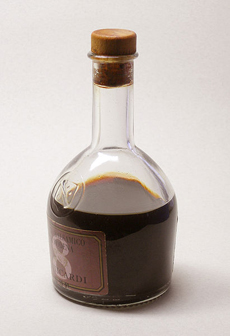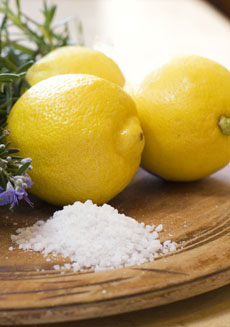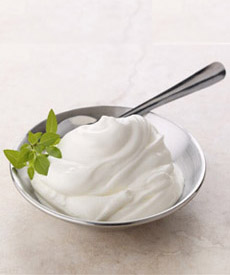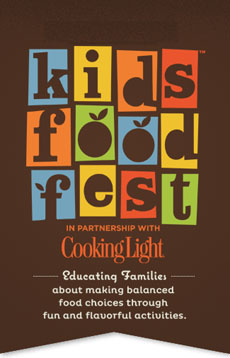|
Today and tomorrow, chef Johnny Gnall takes on condiments: how your cooking can soar to greater heights by combining condiments in non-traditional ways. We got a lot of inspiration from his suggestions! Email your comments and suggestions for tips of the day to Chef Johnny.
You’re about to discover how to take your favorite condiments—ketchup, maple syrup, mayonnaise, whatever you have at hand—and combine them in ways that make them even more delicious.
Last May, when I reviewed The Flavor Bible, I talked about what I call “guerilla cooking.” Guerilla cooking is what being a chef should be all about: taking whatever ingredients are thrown at you, no matter how seemingly incompatible or mismatched they appear, and turning them into dinner. The meal doesn’t always fall under a specific cuisine or stay inside the culinary box, but with skill and knowledge, anything edible can be turned into a tasty treat (anyone who has watched an episode of Chopped knows this is true).
|
|

Combine balsamic vinegar with soy sauce? Who’d have thunk it? Photo by Rainer Zenz | Wikimedia. |
|
COMBINE CONDIMENTS INTO A GREAT MEAL
Another key to the process of turning odds and ends into an exceptional meal is knowing how to maximize the potential of the common ingredients you have in your fridge or pantry.
Take the condiments group, a large set of ingredients bursting with opportunity. Anyone can drizzle truffle oil over potatoes to take things to the next level, but that’s so easy it’s almost cheating. Having the eye to spot a bottle, jar or can of something everyday and the imagination to apply it in an unexpected way can lead to signature dishes and great recipes that you never even knew were possible.
Here are a few not-so-everyday combinations and applications for ingredients you have in your kitchen right now. Use them as a jumping off point, but remember that the real magic will happen when you come up with something brand new and completely your own. Mix away!
BALSAMIC VINEGAR + SOY SAUCE = RICH, BALANCED UMAMI
These two ingredients are a match made in heaven: one intense and sweet, the other intense and salty, both rich and velvety and bold and overflowing with umami and tannins.
Add this combination to pretty much any vegetable and cook it however you like: The result will blow your mind.
To get the amounts right, whisk the two together first (before adding to veggies), adding each in small amounts until you achieve balance. A few grinds of cracked pepper or a pinch of chili flakes add even more zing.
Bear in mind, the better the quality of each ingredient, the richer and thicker your final product will be. The flavors will be there no matter what, but if you happen to have some of the good balsamic in your pantry, bust it out for this one. In addition to flavor, it will cling better to ingredients.
And use a good soy sauce—not the packets that come with Chinese food take-out.
|

Mix naple syrup and grainy mustard?
Magnificent! Photo by Arpad Benedek | IST. |
|
HONEY + CHILI PASTE OR HOT SAUCE =
DELICIOUS DIP
Whether you’re dipping French fries, crudités, or chicken tenders, this sweet and hot combination is a true crowd pleaser. You may need to season with a little salt or soy sauce depending on what kind of chili paste or hot sauce you use, so test a dab before applying it.
You can go naughty and thicken the sauce with a little sour cream, or add depth with a few drops of sesame oil. You can also stir in fresh herbs or citrus zest to brighten things up.
MAPLE SYRUP + WHOLE GRAIN MUSTARD =
FINGER LICKIN’ CHICKEN
This is an easy one and it blows minds every time. A variation on honey mustard, the maple syrup delivers deeper flavor, and the whole grain mustard adds texture as well as clinginess.
Mix the two together in roughly equal amounts, or until you have a paste that will stick to a chicken without sliding off.
|
|
Season said chicken generously with salt and pepper first. This step is important as the sweet, tangy dressing needs the salt to help it achieve balance.
Then slather the chicken all over with the maple-mustard mix, and roast it on a rack at 350°F for 30 to 35 minutes, until its internal temp reaches 160°F.
Make sure to rest the chicken for 10-15 minutes after it comes out of the oven, before slicing into it. Resting allows the cooking process to finish and retains the juices, which otherwise flow out of a non-rested roast.
Then cut into pieces and get the Wet-Naps ready!
MAYONNAISE + ANYTHING = GOOD
Mayonnaise is just so darn versatile: The version we know today was invented by the brilliant French chef Marie-Antoine Carême (1784-1833), founder of the concept of haute cuisine (here’s the history of mayonnaise). The key with mayo is to not go overboard on quantity and turn it into a cholesterol-fest.
Whisk in some raw garlic and a drizzle of olive oil to turn it into aïoli; add a generous spoonful of smoked paprika and you have a killer condiment for roasted potatoes that is not far from Spain’s patatas bravas*.
Throw in some fresh chopped herbs, some lemon zest, a pinch of salt, and a few grinds of fresh pepper and you will take your sandwiches to a whole new level.
Just remember that mayonnaise is rich, so any ingredient you combine should be complementary. Bright flavors, acidity and spice are all excellent foils for richness, so you aim your combinations in those directions.
TOMORROW: How to combine citrus zest, molasses, pickling liquid, sour cream, tomato paste and more into gourmet condiments.
FIND OUR FAVORITE CONDIMENTS & RECIPES IN OUR GOURMET CONDIMENTS SECTION.
*A tapas bar favorite, patatas bravas (also called patatas a la brava or papas bravas) is made from white potatoes that have been cut into small, irregular shapes, then fried in oil and served warm with a very spicy mayonnaise or tomato sauce.
|
|








